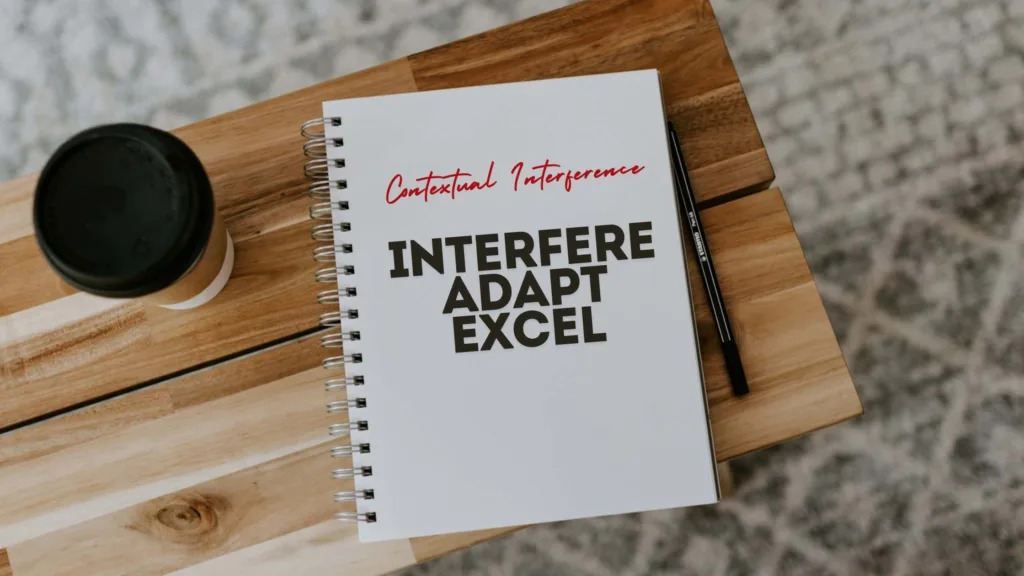Contextual interference (CI) is an idea that greatly affects how we learn and develop skills. It happens when the learning environment is varied, making the learner constantly adapt and adjust. This is different from practicing the same thing over and over in a set pattern. Even though this varied practice might seem confusing at first, studies show that it can actually help people remember what they’ve learned better and apply it in different situations later on. This article explains the theory behind contextual interference, the research that supports its benefits, and how teachers and trainers can use it effectively.
Background
The idea of contextual interference was introduced by a researcher named Battig in 1966. He suggested that when people practice skills in different and changing ways, it can actually help them learn better. For example, if you are learning to play tennis, practicing different types of shots in a mixed-up order (like serves, volleys, and backhands) can be more challenging during practice. This is called high contextual interference (high CI).
Even though it’s harder at first, this kind of practice helps you remember the skills better and use them more effectively in real games. On the other hand, practicing the same shot repeatedly in a set order (low CI) might feel easier during practice, but it doesn’t help as much with remembering or using the skills later.
Mechanisms Behind Contextual Interference
The benefits of contextual interference (CI) can be understood through two main ideas: the Elaboration Hypothesis and the Reconstruction Hypothesis. These ideas explain why practicing in varied and unpredictable ways can help people learn better.
1. Elaboration Hypothesis
The Elaboration Hypothesis suggests that when people practice different tasks in a mixed-up order (high CI), they have to think more deeply about each task. This deeper thinking involves comparing and contrasting the tasks, which helps create stronger and more detailed memories. In other words, the brain makes better connections between different pieces of information. For example, A player practices serves, volleys, and backhands in a random order. Each time they switch tasks, they think about the unique techniques and strategies for each shot. This constant comparison helps them understand and remember the skills better.

2. Reconstruction Hypothesis
The Reconstruction Hypothesis suggests that high CI forces people to reconstruct their plans each time they practice a task. Instead of relying on a repetitive pattern, they must recall and use their strategies from memory. This process makes it easier to remember and use the information later. Consider a pianist practices different pieces of music in a shuffled order. Each time they return to a piece, they have to remember how to play it from memory, rather than relying on muscle memory from repetitive practice. This helps them get better at remembering and performing the pieces in the future.
Practical Applications of Contextual Interference
Using the principles of contextual interference (CI) can make learning and skill-building more effective in various fields. Here are some simple ways for teachers, coaches, and trainers to apply these principles:
- Varied Practice Change up practice routines to keep learners engaged and help them develop stronger, more flexible skills.
- Mixed Study Sessions Combine different topics or types of problems in study sessions to avoid rote memorization and promote deeper understanding.
- Real-World Practice Create practice scenarios that mimic real-life situations to help learners become more adaptable and better at problem-solving.
- Regular Review Encourage learners to revisit previously learned material regularly. This helps strengthen their memory and improve long-term retention.
Related Article: Suggestibility Psychology: The Subtle Art of Persuasion
Challenges and Considerations
Using contextual interference (CI) for learning and skill development has many good things, but there are also some challenges to think about:
- Starting Might Be Tough: When people first try learning with CI, it might be hard and their performance could go down.
- Some Things Are Harder: Really complicated tasks might be even harder to learn with CI, especially for people who are just starting.
- Everyone Is Different: People have different levels of knowledge, motivation, and how well they think. This means some people might find CI easier to use than others.
- Teachers Need to Get Ready: Teachers and trainers need to be ready to make plans and set up practice sessions that use CI in the right way.
- People Might Get Frustrated: When things get harder, people might feel upset because they’re not improving right away.
- It Takes Time and Stuff: Using CI might need more time and different materials to practice with, which could be a challenge for some teachers and trainers.
Contextual interference is a big idea that says mixing things up when learning is really important. When teachers, coaches, or trainers use high CI methods, it helps students learn better and remember things for longer. Even though it might be tricky at first, the good results in the long run make it worth it. As we learn more from research, we’ll get even better at using contextual interference to help people learn and improve their skills.
